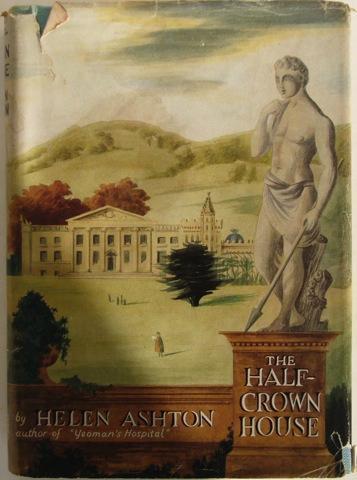
The premise of this wonderful, and inexplicably out of print, mid century novel is so far up my street I can’t believe I hadn’t come across it before last week. Set in the 1950s, it tells the story of one day in the life of the Hornbeam family, as they prepare their minor stately home, Fountains Court, for the final open day of the summer, when locals and tourists are invited to take a tour of the state rooms for the price of half a crown.
Henrietta Hornbeam, 29, is the current family member with the responsibility of keeping the dilapidated house going, with precious little money or resource to do so. Despite being orphaned young, she and her beloved twin brother Harry (yes, twins called Henry and Henrietta – horrific!) spent an idyllic childhood in the house they both adored, but Harry’s death in WWII has knocked the life out of Henrietta and given her precious little enjoyment of anything. All that keeps her going is her responsibility to the house, but the strain of trying to maintain it is becoming almost too much to bear. The strain is eased somewhat by the emotional support of her distant cousin Charlie, who lives in the stable block and uses the grounds as a market garden, bringing in some much needed income. Having lost an arm and an eye in the war, and his wife and child to the Blitz, Charlie has gravitated back to the family home ostensibly to support Henrietta, but also to heal.
While Henrietta and Charlie are doing their best to keep things ticking over, Henrietta’s grandmother, old Lady Hornbeam, is upstairs in her bedroom, criticising everything they do. Spending most of her time reliving her glory days as a society beauty and reported mistress of Edward VII, she feels no guilt whatsoever at having been the one who frittered away most of the family money due to her lavish expenditure at the end of the nineteenth century. She is keen for Henrietta to marry the rich American who she bumped into in the local church at the beginning of the summer, and who is arriving on this final day of the season to potentially buy a valuable painting for a sum of money that would help the family enormously – but also, everyone suspects, propose to Henrietta. His money would solve a lot of problems, but can Henrietta leave Fountains Court, and does she really want to marry ‘her American’?
To add further complications, the last day of the season is also the day Harry’s posthumous child, nine year old Lord Victor, is coming to live at Fountains Court for the first time. His mother, a shop girl that Harry hastily married while on leave after getting her pregnant, has never been accepted into the family, and now she has remarried, Victor has been sent for to take up his inheritance. Henrietta must therefore manage an anxious child, her querulous grandmother, her American, and her own conflicting feelings for Charlie, all while appearing to be the graceful chatelaine for her visitors. However, an unexpected revelation from old Lady Hornbeam before the doors open for the day throws everything into chaos, and soon nothing will be the same for anyone again…
I loved everything about this novel. The history of the house is told through the interwoven stories of present and past Hornbeam family members, and the evocative descriptions of the architecture, decoration and objects that make up Fountains Court and its gardens are so beautifully written and well observed that I felt I was walking through the rooms as I read. I’ve not read a huge amount of immediately post-war novels, and I found it so poignant how Ashton draws with such an unsentimental and realistic pen the legacy of the war in so many ways; not just through the grief of losing loved ones, but also the resulting financial, social and lifestyle changes. The lure of America, largely untouched by the war, looms large; there is an American air base almost on the doorstep of Fountains Court, and the wives posted there can’t stop complaining about how backward English homes are. The descriptions of a shining, modern America with its appliance-filled, centrally heated homes certainly throws into sharp relief the dilapidation of Fountains Court. And the visitors who turn up to pay their half crown don’t mince their words when they suggest that Fountains Court should be pulled down to make way for modern housing to benefit many more people than just one family – there is no longer a feeling that this kind of heritage should be respected and preserved, but more that there should no longer be a place for such extravagance in a post-war world.
The social critique embedded within the novel reminded me very much of Marghanita Laski’s The Village, which also looks at post-war life and the enormous societal changes that took place. Its a fascinating glimpse into so many facets of the period, but ultimately, it’s the depiction of the house and its evolution over time that is the star of the show. Helen Ashton has such a good eye for detail when it comes to the built environment – she also wrote the marvelous Bricks and Mortar, republished by Persephone Books, which is about an architect’s life, so she clearly had an affinity for the subject. I really can’t recommend The Half-Crown House highly enough. Second hand copies are readily available for not too much money – mine cost me £5. And it has the most stunning dustjacket – worth buying the novel for alone! Though I’m hoping soon someone will reprint it, as it very much deserves to reach a wider audience!
